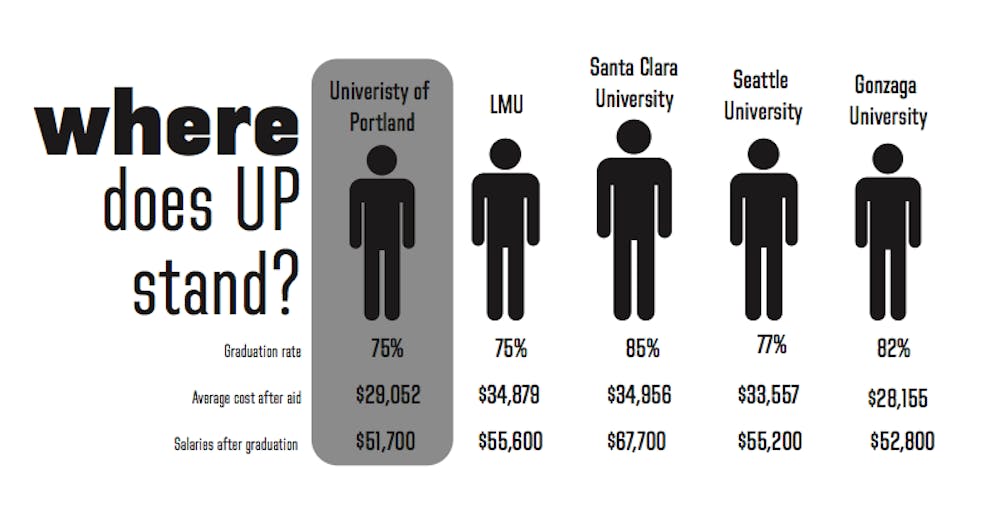by Luke Loranger |
President Obama’s unveiling of the new College Scorecard website on Sept. 12 allows students and parents access to a wealth of information about the University of Portland, along with nearly all other U.S. colleges. The highlight of the tool is the ability to view information about the average annual cost of any given college, graduation rate and median salary of students who attended that college 10 years before.
A White House fact sheet emphasized the importance of the College Scorecard in helping students find “reliable data” on financial information related to attending college, especially in the face of rising costs of higher education.
The information provided by the scorecard is not laid out like U.S. News & World Report or Forbes’ rankings of colleges. Instead, it provides data such as average student debt or the makeup of the student body.
In terms of cost, UP ranks well among the institutions it generally compares itself to, such as Loyola Marymount University, Gonzaga University and Santa Clara University.The cost of attending UP is significantly lower than these schools, with the average price being $29,502 per year after financial aid from the school or state.
College Scorecard also lists salary information for alumni of colleges nationwide 10 years after they graduated, which was not available before the launch of the scorecard. The average salary of UP alumni is $51,700, which is lower than schools such as Santa Clara, but higher than the national average of $34,343.
“Too often students and families play a guessing game about whether they will be able to pay back their student loans. The administration's new College Scorecard is a [welcomed] initiative,” U.S. Senator Ron Wyden, (D-Ore.), said in a news release. Wyden is the sponsor of the “Student Right to Know Before You Go Act” along with U.S. Senators Marco Rubio, (R-Fla.), and Mark Warner, (D-Va.). This legislation would require the Department of Education to release even more information about colleges, such as transfer rates and how frequently graduates of a given college go on to higher education.
Many members of the Pilot community believe that UP stand outs because of intangible things that do not appear on the College Scorecard.
“I think the University of Portland has a great community,” sophomore business major Harrison Horblit said. “It is very tight-knit and personal, but there is the opportunity to meet new people through classes and clubs. I am from Colorado, and I wanted to get out of my hometown and go to new places and do new things. It has definitely been a good fit for me.”
The feeling of knowing a college is the right fit after visiting campus can be even more important to prospective students than the cost of attending college.
“I think the biggest draw [to UP] is the community, which you cannot define on paper,” Dean of Admissions Jason McDonald said. “I hear this a lot with students that visit, that everyone is welcoming and friendly and you get a good vibe about the University.”
College Scorecard can be found at https://collegescorecard.ed.gov/.
Luke Loranger is a news reporter for the Beacon and can be reached at loranger18@up.edu or on Twitter @loranger18.








